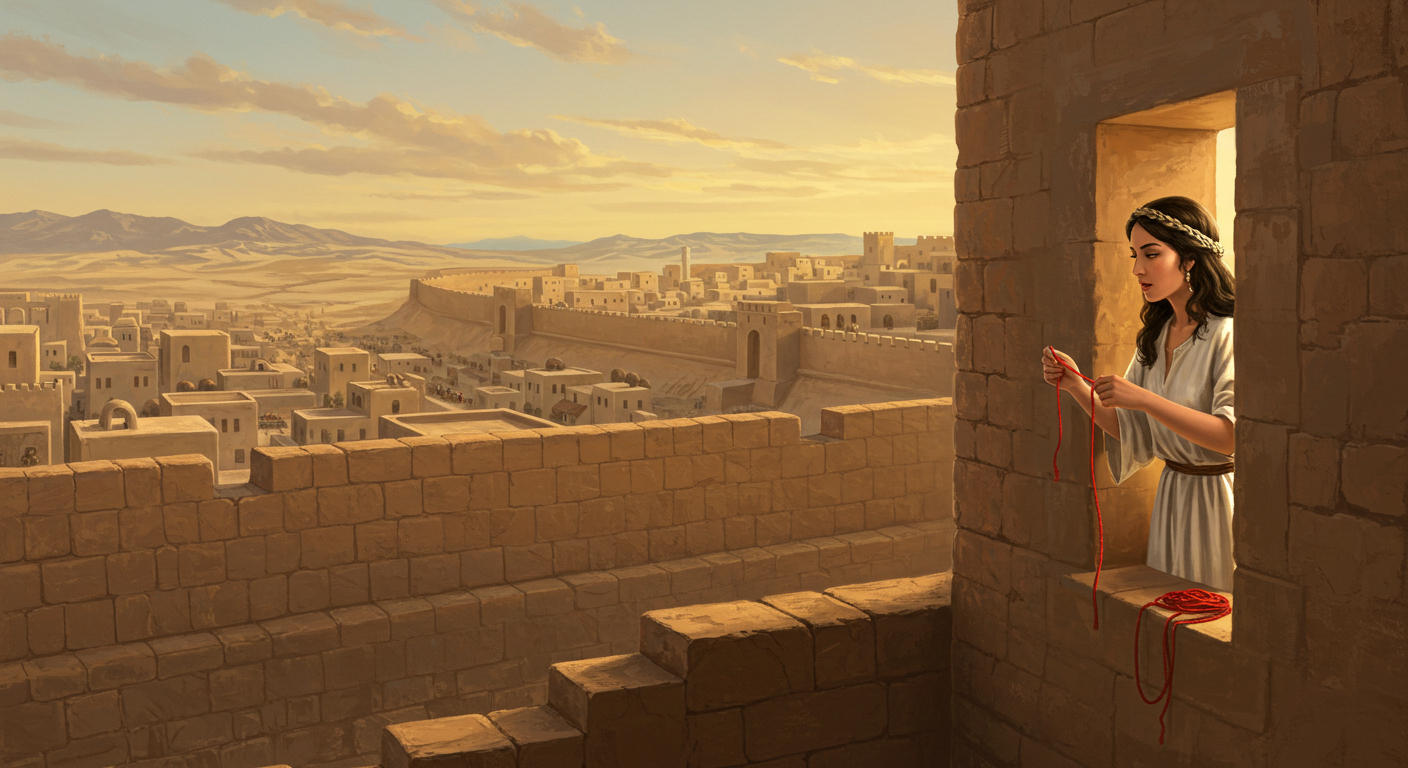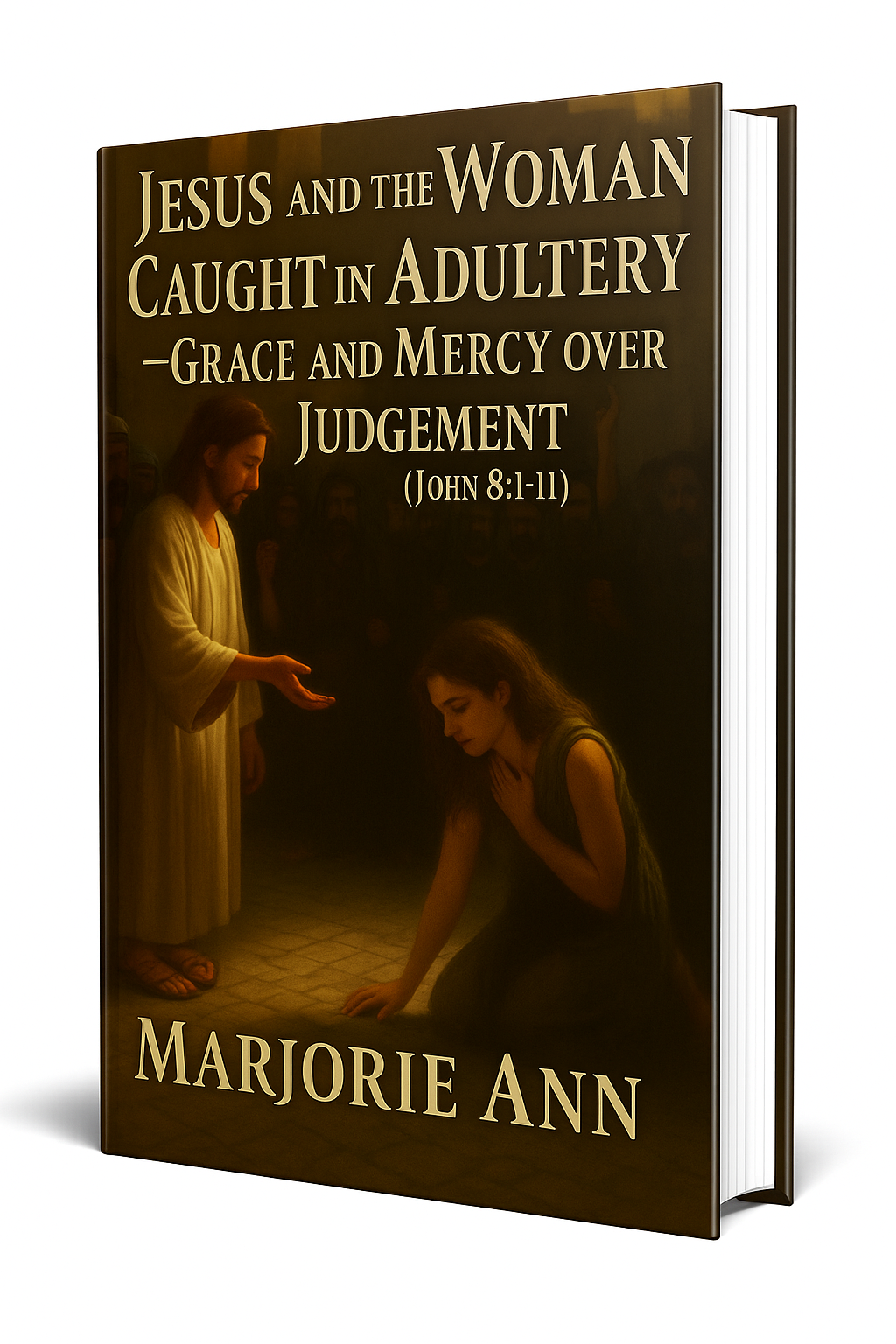Lessons From Rahab – Faith That Acts With Courage
When you read Rahab’s story, you find a woman who, despite her past and her precarious situation, made a decision of faith and acted with courage. From a brief account in Joshua to a mention in the New Testament, Rahab’s life packs lessons for every believer who wants faith that moves mountains — or at least opens city gates. In this article, you’ll explore the Application of Rahab’s story to believers, tracing her actions, the theological significance, and the practical steps you can take to let your faith be both genuine and active.
Who Was Rahab? A Brief Background
Rahab appears in the book of Joshua as a resident of Jericho. She is described as a prostitute who hid Israelite spies sent by Joshua. When you read the initial introduction of Rahab, you encounter a woman living under the shadow of a conquered city, but who exercises a bold initiative that shapes Israel’s future. See her first appearance here: Joshua 2:1. Her identity is surprising — and that surprise is intentional. God often raises up unlikely instruments to accomplish his purposes.
Rahab’s Faith and Her Action
Rahab didn’t merely confess belief; she acted on it. When the king of Jericho sought the spies, Rahab hid them and misdirected the searchers so the spies could escape. Her faith was pragmatic and courageous. You can read about her interaction with the messengers in Joshua 2:4-6. This practical, risk-taking faith is central to her legacy. The Application of Rahab’s story to believers shows that genuine faith is not just intellectual assent; it’s behavior informed by trust in God.
The Promise and the Scarlet Cord
Before the spies left Jericho, Rahab negotiated safety for herself and her family. She tied a scarlet cord in her window as a signal and as part of the agreement for her protection. The scarlet cord becomes a vivid emblem of salvation and protection amid judgment. Read the terms of that agreement and the symbol here: Joshua 2:17-18. Later, when Jericho fell, the spies honored the promise: Rahab and all her family were spared. See the fulfillment here: Joshua 6:22-23. The Application of Rahab’s story to believers includes the truth that God’s mercy can be signaled through simple acts of obedience and faith.
Rahab and the Fall of Jericho
Rahab’s obedience contributed to one of the most dramatic moments in Israelite history — the fall of Jericho. The people of Israel followed God’s unconventional instructions and marched around the city; the walls collapsed and the city fell. Rahab, because of her actions, was spared and welcomed among God’s people. You can read about the outcome of Jericho here: Joshua 6:25. The Application of Rahab’s story to believers reminds you that your actions—when aligned with God’s purposes—can have effects far beyond what you imagine.
Rahab in the New Testament: Faith That Works
Rahab is commended in the New Testament for her faith and actions. Hebrews highlights her inclusion among people who acted in faith, and James emphasizes that faith without works is dead, using Rahab as an example. See Hebrews’ commendation here: Hebrews 11:31 and James’ teaching here: James 2:25. The Application of Rahab’s story to believers becomes plain: faith and works are partners, not rivals. If you say you believe, your life should bear the fingerprints of that belief.
Rahab’s Place in the Lineage of Jesus (Matthew 1:5)
One of the most striking mentions of Rahab is in Matthew’s genealogy of Jesus. Rahab appears in the human line that leads to Christ. See the genealogy reference here: Matthew 1:5. This connection is powerful and humbling. God placed a Gentile, a former resident of Jericho, into the family tree of the Messiah. The Application of Rahab’s story to believers teaches you that no past disqualifies you from God’s redemptive purpose — if there is repentance and faith, God can rewrite your story.

What Rahab Teaches You About Courage
Courage often looks less like swagger and more like a quiet, risky obedience. Rahab’s courage was practical; she hid the spies despite the danger to her life and livelihood. When you face fearful situations, Rahab’s example instructs you to act wisely and courageously in response to God’s call. The Application of Rahab’s story to believers includes learning to trust God even when obedience involves risk.
Faith That Acts: The Biblical Pattern
The Bible repeatedly links faith and action. Rahab is a clear example: her faith was visible because she did something—she protected the spies, negotiated for her family, and displayed the scarlet cord. Hebrews and James both highlight that pattern. When you study these texts, you see that God’s people are called to a faith that translates into measurable, tangible decisions. The Application of Rahab’s story to believers emphasizes that spiritual belief is meant to change behavior and priorities.
Practical Steps You Can Take: How to Apply Rahab’s Example Today
You may be asking, “How do I put this into practice?” Start small and realistic. Rahab did not overhaul an entire nation; she did what she could. You can do the same. Begin by identifying one area of your life where faith needs action: reconciling a relationship, sharing your faith, stepping into a leadership role, or making a moral choice. Then take a concrete step—call the person, volunteer for the task, confess your sin, or speak the truth in love. The Application of Rahab’s story to believers guides you toward actionable obedience that honors God.
Dealing with Shame and Past Failures
Rahab’s past did not disqualify her from God’s plan; rather, it highlights God’s grace. If you carry shame from past choices, remember Rahab’s story. She was known as someone outside the covenant community and in a profession society condemned, yet she found a place in God’s redemptive history. The Application of Rahab’s story to believers is an invitation to come clean before God, to embrace his forgiveness, and to step into new life without being defined by your past.
The Power of a Single Act of Faith
One act of faith can have ripple effects across generations. Rahab’s single choice to hide the spies and place her trust in the God of Israel led not only to her own salvation but eventually to her inclusion in Jesus’ family line. This demonstrates to you that you should not underestimate the significance of courageous obedience. The Application of Rahab’s story to believers encourages you to take responsibility for the opportunities God places before you, knowing small acts of faith can change history.
Rahab’s Example for Evangelism and Hospitality
Rahab’s dwelling became a doorway for saving others. She hid outsiders and welcomed them into her home. You can learn from her about hospitality and protection for the marginalized and those seeking refuge. Today, you can practice hospitality by creating safe spaces—inviting someone into your life, mentoring a believer, or supporting missionaries. The Application of Rahab’s story to believers shows you that hospitality is a spiritual discipline that can be a conduit of God’s work in people’s lives.
Leadership Lessons From Rahab
Rahab demonstrates leadership under pressure. She assessed the situation, negotiated terms, and executed a plan that served both her interests and God’s purposes. Her leadership was decisive and faith-filled. You can model that by making courageous choices that align with Scripture, communicating clearly, and accepting responsibility for outcomes. The Application of Rahab’s story to believers invites you to lead with humility, faith, and practical wisdom.
Theological Reflections: Redemption, Grace, and Inclusion
From a theological standpoint, Rahab’s story showcases God’s grace and the expansive reach of redemption. God’s covenant community became more inclusive when a Gentile woman was grafted in through faith. This truth challenges you to rethink who qualifies for God’s grace and to become an agent of inclusion in your community. The Application of Rahab’s story to believers highlights that salvation is not about pedigree but response to God’s mercy.

How the Church Can Learn From Rahab
The church can draw both humility and courage from Rahab. She reminds the church to extend grace generously and to welcome repentant sinners into the body. At the same time, her courageous action is a model for the church’s mission-oriented behavior—engaging culture, protecting the vulnerable, and making sacrificial moves for the sake of the Gospel. The Application of Rahab’s story to believers offers an ecclesial blueprint: be a refuge, not a fortress.
Overcoming Fear and Taking Spiritual Risks
Fear often prevents you from acting when faith requires a risk. Rahab’s courage came with the real risk of death. Yet she chose faith over fear. To follow her example, you will need spiritual disciplines—prayer, Scripture, community—that prepare you to take risks when God calls. The Application of Rahab’s story to believers is a practical antidote to paralysis: faith requires forward motion, not endless deliberation.
Spiritual Disciplines That Support Courageous Faith
To cultivate a faith that acts, you’ll want to practice disciplines that strengthen your trust in God. Regular Bible reading, prayer, fasting, and community accountability help produce a life prepared for decisive action. Rahab’s narrative shows the fruit of immediate, decisive trust; disciplines help train you for such moments. The Application of Rahab’s story to believers invites you to invest in spiritual practices that create readiness for God-sized opportunities.
The Role of Repentance and Transformation
Rahab’s inclusion in God’s people suggests authentic repentance and transformation. You should notice that her action reflected a turning toward Israel’s God rather than a casual alignment. Repentance changes not only mind but also the behavior. If you truly turn from sin and toward God, your life will begin to reflect that decision. The Application of Rahab’s story to believers is a reminder that transformation is both inward and outward—faith that acts shows heart-change.
Mentoring, Discipleship, and Rahab’s Example
Discipleship often begins with a single act of inclusion—someone welcoming a seeker, a believer mentoring a new Christian, a church offering refuge. Rahab’s story is a model for how a one-on-one encounter can lead to life-changing discipleship. You can be that person who offers guidance, protection, or a practical step of faith for someone else. The Application of Rahab’s story to believers encourages you to be available and intentional in raising others.
When God Uses Unexpected People
One of the most freeing lessons in Rahab’s story is that God often uses unexpected people to fulfill his purposes. Being “unexpected” can be an asset; it means God’s power, not your background, is on display. If you feel unqualified, remember Rahab: God chooses unlikely candidates to highlight his grace. The Application of Rahab’s story to believers assures you that God measures differently than the world. Your position or profession doesn’t limit God’s calling on your life.
Applying Rahab’s Example in Daily Decisions
Not every moment of faith requires dramatic heroics; most require steady, daily decisions to choose God’s ways over comfort or popularity. Rahab’s decision was dramatic, but it started with a personal conviction. You can practice courageous faith in small daily choices: speak truth kindly, keep a promise, stand for justice, or help someone in need. The Application of Rahab’s story to believers is practical: faith grows by doing what you can, where you are, with what you have.
The Long-Term Impact of a Courageous Faith
Rahab’s life didn’t end with Jericho; she became part of a lineage that produced the Savior. That long-term impact should encourage you: God takes the faithful decisions you make now and weaves them into his larger story. You may never know the eternity-reaching effects of a single faithful act. The Application of Rahab’s story to believers is a pastoral reminder that your obedience matters far beyond your sightline.
Common Objections and Honest Questions
You may wonder whether Rahab’s profession or past undermines her testimony. The answer is no; Scripture highlights her faith despite those realities. Another question: Does faith always require risk? Not always, but sometimes obedience will cost you comfort or reputation. Rahab models that risk taken in faith can lead to redemption and blessing. The Application of Rahab’s story to believers helps you face these honest questions with biblical clarity and pastoral grace.
Counsels for Leaders: How to Encourage Rahabs in Your Community
If you lead a church or ministry, you are responsible for creating a culture that recognizes and nurtures faith in unlikely places. Encourage stories of redemption, provide safe pathways for newcomers, and celebrate courageous acts of faith. Rahab’s example should shape your leadership priorities: prioritize grace, protect the vulnerable, and reward faithful action. The Application of Rahab’s story to believers equips you to cultivate a community where transformation is possible.
Closing Reflections: Your Next Step in Faith
As you reflect on Rahab’s story, notice the simplicity and power of her response: she believed, acted, and trusted the God she had heard about. Your next step may be as simple. Identify one action you can take this week that demonstrates trust in God—then do it. The Application of Rahab’s story to believers is not merely historical curiosity; it’s a living invitation to participate in God’s redemptive work through courageous faith.
Conclusion: Be Courageous, Be Faithful
Rahab’s life is a testament to the transforming power of faith that acts. She modeled courage, decisive obedience, and a willingness to risk for the sake of God’s purposes. When you bring your life to God with honesty and take steps of faith, you mirror Rahab’s witness. Remember she is not just a figure in the past; her story continues in every believer who chooses action over apathy and courage over comfort. The Application of Rahab’s story to believers calls you to a faith that is visible, risky, and redemptive.
Explore More
For further reading and encouragement, check out these posts:
👉 7 Bible Verses About Faith in Hard Times
👉 Job’s Faith: What We Can Learn From His Trials
👉 How To Trust God When Everything Falls Apart
👉 Why God Allows Suffering – A Biblical Perspective
👉 Faith Over Fear: How To Stand Strong In Uncertain Seasons
👉 How To Encourage Someone Struggling With Their Faith
👉 5 Prayers for Strength When You’re Feeling Weak

📘 Jesus and the Woman Caught in Adultery – Grace and Mercy Over Judgement
A powerful retelling of John 8:1-11. This book brings to life the depth of forgiveness, mercy, and God’s unwavering love.
👉 Check it now on Amazon
As a ClickBank & Amazon Affiliate, I earn from qualifying purchases.
Acknowledgment: All Bible verses referenced in this article were accessed via Bible Gateway (or Bible Hub).
“Want to explore more? Check out our latest post on Why Jesus? and discover the life-changing truth of the Gospel!”








